Abstract
The Indigenous people being excluded from modern life and formal education is still an ongoing topic even though Malaysia has been independent for 65 years. With the emergence of COVID-19, most educational institutes have shifted to online learning to keep the academic activities going. However, it is imperative to see the perspective of the Indigenous students regarding the abrupt changes in their learning process. This study is to understand the Indigenous students’ perspectives on online learning experience. Twelve Indigenous students volunteered to identify the strengths and weaknesses of online learning based on their own online learning experiences. Results from the interviews showed that there are strengths in online learning especially on the availability of recorded video, easier to obtain information, flexibility and time saving. However, respondents also highlighted some of the weaknesses such as slow (unstable) internet connection, inability to focus, lack of interaction and motivation. At the end of the day, online learning acceptance by the Indigenous students is not something that can be achieved overnight. The students’ direct experiences through online learning help shape a new perspective of this learning method and it is a promising future for online learning and the education of the Indigenous students in Malaysia.
Keywords: Perception, perceived strength, perceived weakness, online learning, Indigenous students, Malaysia
Introduction
As universities move to strictly using only online platforms, it’s important to recognize that not every student has internet access in their home communities. Some students without reliable internet access and/or technology struggle to participate in digital learning; this gap is seen across countries and between income brackets within countries (Li & Lalani, 2020). The assumption that Indigenous students have internet access once they return to their home communities is a grave, and unfortunate, misunderstanding (Howard & Sundust, n.d.). For example, Indigenous students face various challenges to gain access to online learning due to slow (unstable)internet connection. Moreover, some places in the rural areas do not have internet coverage and others unfortunately are unable to afford purchasing their own handphones and laptops for study (Muthuprasad et al., 2021). As a result, they will lose interest to go to school and in learning due to the lack of motivation (Husin, 2021). For some secondary school boys, they opted to working as manual labour workers instead (Abdullah et al., 2021).
Indigenous community education has been disrupted due to the lack of devices and access to technology especially during and post the COVID-19 pandemic. Considering these developments, the government is committed in addressing the many digital divides by enhancing digital infrastructure and services. In September 2021, the Prime Minister has tabled the 12th Malaysia Plan (RMK12) in Dewan Rakyat with the theme and objective of “Keluarga Malaysia - Prosperous, Inclusive, Sustainable”. He mentioned that Orang Asli is a part of Keluarga Malaysia that we need to empower to develop together, and they are always a concern to the government. Hence, a comprehensive Indigenous socioeconomic development plan is being drafted, encompassing aspects from increasing income and wellbeing to basic infrastructure (12th Malaysia Plan: Govt to Introduce National Policy to Strengthen Unity between Malaysians, 2021).
Although the education sector received well attention and a large sum of funding by our government, the progress of education amongst the Indigenous Community is not aligned and even far behind with the progress of other ethnic (Sawalludin et al., 2020). This is proved with the statistics that have shown that the Indigenous community have one of the worse records in education compared with other major races such as Malays, Chinese and even Indians (Sawalludin et al., 2020). Furthermore, numerous local and foreign investigations found that the quality of education of the Indigenous Community is still at a low level and is still very far behind as compared to the mainstream society and this is indeed a critical problem (Abdullah et al., 2013). Thus, the objective of this study is to understand the Indigenous students’ perspectives on online learning experience. Particularly, to comprehend the Indigenous students’ perspectives of strengths and weaknesses of online learning.
To answer this objective, two research questions have guided this study:
What are the Indigenous students’ perceptions of online learning that is considered as strong points in this learning process?
What are the Indigenous students’ perceptions of online learning that is considered as challenging in this learning process?
The structure of this study is followed by literature review and theory, research methods, findings and lastly conclusion and recommendation.
Literature Review
The Indigenous group in Malaysia
Malaysia is a multi-cultural nation that is comprised by various ethnic backgrounds – Malays, Indians, Chinese and the natives of peninsular Malaysia and Sabah and Sarawak. Orang Asli are the Indigenous people of the peninsular Malaysia. Indigenous population is estimated at 206,777 from the latest census done in 2020 by Department of Orang Asli Development (JAKOA) (Department of Orang Asli Development, 2020). Thus, the population of Indigenous people only represents less than 1% from the total population of 32.37 millions of Malaysia in 2020. Consequently, the Indigenous is considered as the minority people of Peninsular Malaysia (Jamiran & Seow, n.d).
The term "Orang Asli" in Malay means "Original People" or the earliest inhabitants of the Malay Peninsula. Most of them settled in the remote, thick rainforest and still practise the traditional ways of living that is influenced greatly by the environment and their ancestral practices (Abdul Wahab et al., 2016; Mohd Shah et al., 2018). The Indigenous community is divided into three groups – Senoi, Proto-Malay and Negrito (Department of Orang Asli Development, 2022). From the three main group, the Indigenous community was then divided into eighteen cultures and sub-groups (Lin, 2008). Figure 1 shows the different sub-groups and their areas of living.
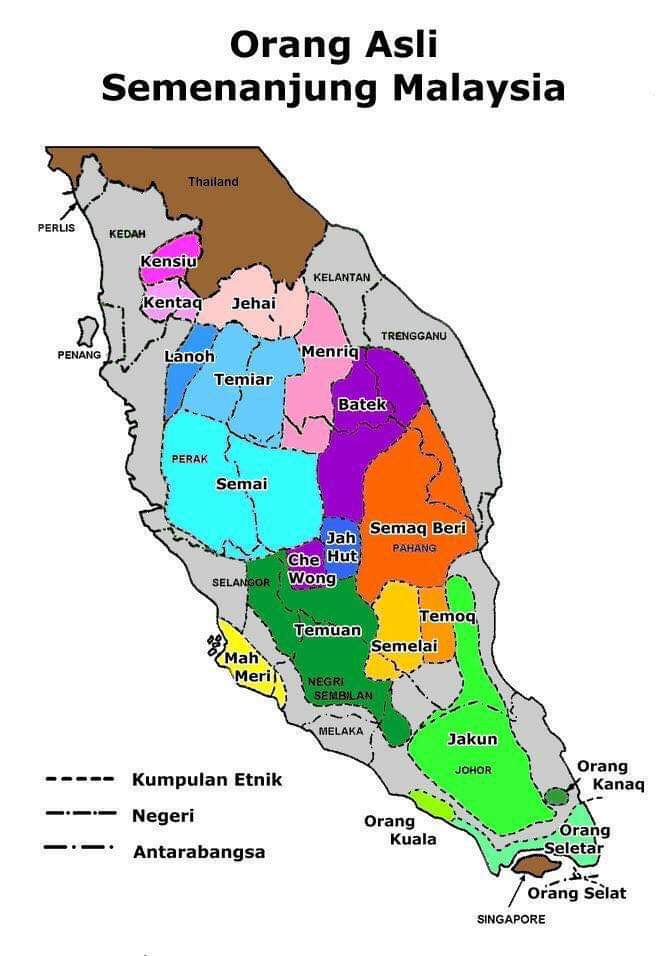
Various efforts have been made to improve the Indigenous community via economic, social, and educational development projects (Ramle, 2001). The government aimed to raise the socioeconomic level of the Indigenous community because as of today their development is considered low as compared to other ethnic groups in this country (Mohd Shah et al., 2018). Providing the Indigenous people with quality formal education has always been a critical issue in Malaysia (Mohd Adnan et al., 2020). This is due to the different cultural, language and the acceptance of the Indigenous people themselves (Renganathan, 2018).
Online learning experience among the Indigenous group in Malaysia
Indigenous communities may have different learning preferences, and this needs to be considered when designing assessments (Briggs, 2021). Briggs (2021) also affirmed that cultural background and prior knowledge about the community should be reflected in during designing the curriculum. In 1995, JAKOA had run an educational program with the objective of preparing Indigenous children for entry into mainstream education, however the program is unsuccessful due to the lack of knowledge about the culture and tradition of the Indigenous people among the educators at the central primary schools (Sawalludin et al., 2020).
Gradually, the world is moving towards a higher dependence on online technologies, from banking, liaising with government services, communicating with other people and of course education (Anthony & Keating, n.d.). The push towards online education, particularly in the more developed countries of the world has been considerable over recent years (Li & Lalani, 2020). However, according to Department of Orang Asli Development (2011), the Indigenous people’s adoption toward technology is not as fast as compared to other communities. The attitude of indifference among Indigenous people when it comes to education and technology had caused the failure to improve the quality of education among their community (Sawalludin et al., 2020).
According to Renganathan (2018), Indigenous students are afraid to engage with different education methods. Eventually, Indigenous children are left behind from their studies because they unable to transition and adapt with the new method of education. Thus, the transition to online learning is considered unusual and difficult for them to adapt to (Mohd Salim et al., 2020). In order to ease them with online learning, the existing education system should provide more exceptions and flexibility so that they can learn this new concept of learning at their own pace. Embracing online learning with Indigenous people's lives and culture is the only way to enhance their acceptance and understanding that online learning is able to help their children to get the right education they need.
Indigenous students’ perceived strength of online learning experience
Learning is an important starting point for exploring the use of technology that led to the success of online learning (Smart & Cappel, 2006). In hindsight, the basis of effective online learning is comparable to the foundation of effective learning. Online learning is using the new technologies and web-based activities. These activities are interactive, students will participate with learning material and learn by doing, hence enhancing their understanding as they build new knowledge (Johnston et. al., 2005).
Furthermore, online learning allows students to get wider access to information gathering (El-Seoud et al., 2014). It also enables students to flexibly carry out their education without boundaries (Tanjung & Utomo, 2021). According to Quitadamo and Brown (2001), online learning is able to instill real situation which provide motivation for students and creates excitement during problems solving. University students perceived social media as effective in gathering information and encouragement (Bal & Bicen, 2018). Previous study by Poole (2000) found that students can do online discussions to complete their assessments and they are also able to access course materials from their home computers.
Although research on students perceived online learning has been widely conducted, the study for Indigenous students’ perceived on online learning still needs further study. In conclusion, online learning has numerous advantages. It can foster a sense of community among the students, help them become more self-reliant, increase their ability to communicate effectively with lecturers, and sharpen their problem-solving abilities.
Indigenous students’ perceived weakness of online learning experience
Even though online learning has begun a few decades ago, and a lot of studies have shown the benefits of online learning, there are still few groups that perceived online learning having its own disadvantages or weaknesses. According to Davey (2019), in her qualitative study she found that the Indigenous students had opinionated various weaknesses of online learning such as: (1) different time management with physical classes, (2) technical hurdles in handling technology-related problems during the online classes, (3) less accountability because relationships were lacking within the digital classroom (lack of human touch), and (4) online learning expect higher level of students’ readiness and advance innovation.
Meanwhile, Hu et al. (2022) investigate the relationship between online learning and computer anxiety. Computer anxiety is referred to an individual's feeling of fear, insecure and apprehensive in using computers. They found that 72% out of 512 students self-reported a certain level of anxiety in managing their online classes during the pandemic. This causes the perceive weaknesses of online classes. However, Abdullah and Ward (2016) mentioned that this computer anxiety is due to the seldom use of computer or innovation and it can be overcome if they increase their usage in it.
On the other hand, Mukhtar et al. (2020) has reported a few limitations outlined by the students as well as faculty members. They divided the limitations into two categories which are (1) inefficiency and (2) maintaining academic integrity. Some examples of inefficiency are there are limitation in giving response and feedback during online class which are sometimes caused by the unstable internet connection. Other than that, lack of attentiveness shown by the students. They think that it is not a problem if they do not pay 100% attention as they then can repeat the lesson from the recordings provided.
On the other side, Liu et al. (2010) reported different findings on perceptions towards online learning. The respondents suggested that the courses will be way better if there are no cultural barriers including language used, communication medium used and others. However, most Indigenous students are unable to gain access of education due to the remoteness of some Orang Asli settlements (Mohd Adnan et al., 2020). As for this study, it is anticipated that the culture of Indigenous community will be different with other groups. Therefore, it is important to get their perceptions towards online learning in ensuring full participation during online class.
Technology acceptance model (TAM)
Numerous studies have been given to ascertain the factors influencing people's acceptance of new technology in previous research conducted on the subject. The TAM model has developed into a reliable tool for forecasting the adoption of various technologies (Al-Emran et al., 2018). Davis (1989) developed TAM as a tool for anticipating user acceptance of any information technology system and for identifying design flaws before users interact with the system. TAM was developed in the USA but has been applied and assessed in a variety of situations and empirical research (Al-Emran et al., 2018; Salloum et al., 2019; Tarhini et al., 2017). TAM is an excellent model for academics to utilise to get students' perceptions of technology, in this case, online learning, hence it is employed as the theory guiding this study. In this aspect, a good grasp of the paradigm facilitates research on Indigenous students' online learning experiences.
Method
In this study, twelve Indigenous students from University Tenaga Nasional (UNITEN) Muadzam Shah volunteered to share their experiences on full online and traditional learning session. Prior research suggests that in order to reach data saturation, qualitative studies should have a minimum sample size of at least 12, (Braun & Clarke, 2013; Fugard & Potts, 2015; Guest et al., 2006; Vasileiou et al., 2018). When enough data has been gathered to make the essential conclusions, a research process has reached data saturation, and any additional data collecting will not yield insightful new information (Quantilope, 2022). Therefore, the sample of twelve was deemed sufficient to proceed with this study.
This study conducted a structured interview with the Indigenous students through face-to-face setting. In addition, all the necessary precaution has been applied to ensure the safety of the students attending this interview. During the interview, the interviewer was guided by an interview guide that contains questions regarding the Indigenous students’ perceptions towards online learning experience. This interview was conducted to get in depth information about the strengths and weaknesses of online learning on the student’s point of views. The guided questions were adopted from the previous study done by Song et al. (2004).
The guided questions are as follows:
- Tell us about an online course you have taken…
- How is your online learning experience?
- In your opinion, what are the strengths and weaknesses of online course?
- Thinking about those strengths and weaknesses, think about face-to-face courses you have taken. What is the difference between these two methods of learning?
- You have the experience with taking courses online. What suggestions would you give to a student who is taking an online course for the first time? What suggestions would you give to a faculty teaching online courses?
All the information obtained during the interview session have been refined into meaningful data to be reported in this study. Additionally, all the twelve respondents had experienced a face-to-face class beforehand, therefore they had an experience in both methods of learning. Thus, the results are expected to be more reliable, comparable, and impactful for this study.
Findings
Indigenous student’s demographics
A total of 12 Indigenous students from Universiti Tenaga Nasional (UNITEN) Sultan Haji Ahmad Shah Campus have participated voluntarily in this interview to understand their perceptions on online learning experience. All the respondents are undertaking diploma programs. Figure 2 shows that the respondents consist of 1 male and 11 female students. This is due to almost all universities are dominated by female students. According to Ahmad (2020), public higher education institutions accommodate more female students with 61% as compared to male students at 39%.
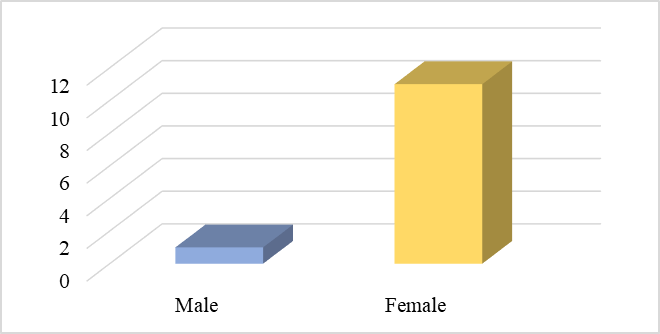
In figure 3, the highest number of respondents are from age 19 years old, followed by 4 respondents from the age of 18 years old and lastly, 1 respondent from age 20 years old. Figures 4 and 5 show that most respondents are from Pahang and their ethnic is Jakun, which is under the category of Melayu Proto.
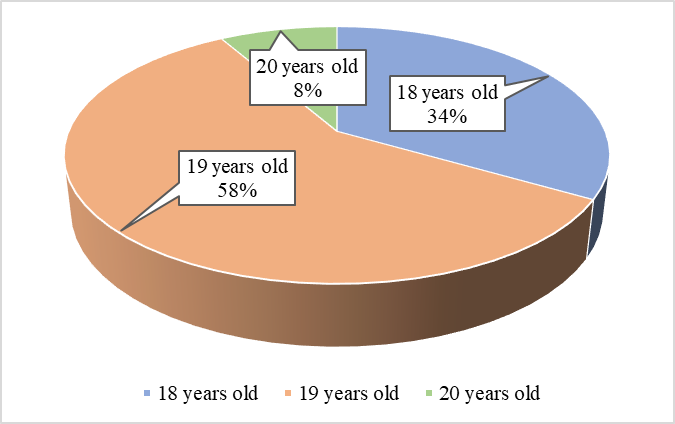
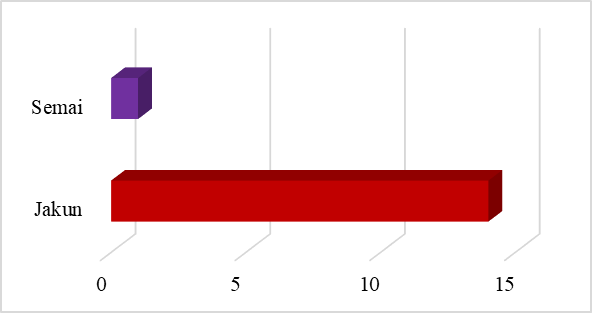
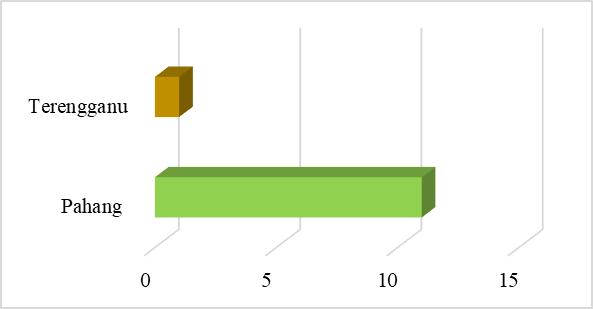
Figure 6 below is to highlight the online courses taken by the respondents. This word clouds help highlight the important textual data point from the interview script (Korab, 2021). From the word clouds, several subjects have been taken by most respondents, for example principles financial accounting, business mathematics, academic study skills, principles of management, principles of finance and morals and society.

Table 1 shows a summary of Indigenous students’ perception indicators based on the interview conducted. In this study, the Indigenous students’ perception on online learning experience were evaluated based on their perceived strengths and perceived weaknesses.
Indigenous students’ perceived strength
Previous study showed that online learning has the ability to improve higher learning and enhance learning effectiveness (Alavi, 1994; Sahni, 2019). Almost all of the respondents agree that the recorded videos provided during online learning helps them to study better. Students are able to replay and study at their own pace and time. Majority of the respondents generally mentioned “” and “…”.
Some of the respondents stated that they can learn new things and are able to obtain information faster through online setting. Several respondents generally highlighted that “…easy to get information online…” and “there are various website to choose… can get information the lecturer want”. Respondent 7 expressed agreement by saying that “…learning without boundaries...”.
They also highlighted about flexibility, where the respondents enjoy studying without any dress code at their own location. Respondent 10 mentioned that, “……”. This is supported by respondent 5 that said “….” Respondent 12 admitted that “……”.
Several respondents also mentioned about saving time where they do not have to walk to class especially during night time. Respondent 8 and 9 both agreed on “…” and “…”. This is further explained by respondent 3 “…”.
From the interview, this study identified several strong points of online learning, such as recorded video provided, easier to obtain information, flexibility and time saving. These advantages are the strengths of online learning that could be explored to provide better learning experience for the Indigenous students.
Indigenous students’ perceived weakness
On the contrary, online learning has been said to eliminate classroom real interaction time (Laine, 2003). It also has limited the interaction between students and lecturers causing hindrance and misunderstanding during teaching and learning process (Hara & Kling, 2000; Piccoli et al., 2001; Smart & Cappel, 2006). The majority of respondents pointed out slow internet connection at home that obstructed the learning process. For example, respondent 1 said that “…internet connection is not so fast at home…”, this statement was also supported by respondent 4 that highlighted the needs for stronger internet connection to do online class, “…need strong internet connection to join Teams…”. Additionally, respondent 11 stated that “… Teams get disconnect several times because the internet at my home is not strong enough…”.
Another indicator that has frequently been highlighted by the respondents is lack of focus during online class. Respondent 1 stated that “…unable to focus during online class…”, and respondent 8 also agreed with respondent 1 by saying “…there are lots of distraction…unable to focus…”. Respondent 9 shared her insights, “…sometimes there are other gadget for example my phone, I will get distracted by it while listening to lecture…”.
Lack of interaction also has been emphasized by the respondents. Respondent 1 said that due to the lack of interaction, she feel sleepy during class, “…I listen a lot…halfway through class I feel sleepy…”. Respondent 7 also agreed with respondent 1 as she too felt the same way. However, respondent 9 further explained her point of view by saying, “…the class is too boring, I don’t see anyone…everyone switch off camera and audio…”. Furthermore, respondent 2 mentioned that “…it is hard…lack of interaction between friends even lecturers…”.
Respondents’ motivation is also worrisome. Respondent 12 expressed that, “…lack of motivation to study because I feel lonely…”. Respondent 11 provided her experience by stating that, “I have to sit at one place for hours…trying to understand everything but it is a difficult situation for me…”. Respondent 7 preferred real time learning and stated, “I don’t like online learning methods…”.
In conclusion, several challenges faced by the respondents during online learning has been considered as weaknesses of this learning method. Slow internet connection, unable to focus, lack of interaction, and lack of motivation have been mentioned by the respondents during the interview. These weaknesses should be tackled by the responsible parties (e.g., lecturers, faculties, government, etc.) to improve online learning methods in the future.
Indigenous students online learning experience
The indigenous students in Universiti Tenaga Nasional Muadzam Shah are familiar with both face-to face and online learning class. Most of the respondents agree that there are strengths and benefits of online class, however certain weaknesses emerged together as they experience their learning journey through different semesters with different subjects and lecturers. Respondent 1 stated that, “I agree that the advantage is there but I have to prepare mentally and physically before started new semester every single time…”. Respondent 2 mentioned that, “…online class is somewhat cheap, as you can use all the available online application to do your assignment…”. Respondent 8 also expressed that, “...able to experience new things; systems and different application we never use before…”.
However, respondent 2 provided his insights by saying, “…there is a need for gap in between online class”. This should provide the students with enough time to rest before starting or proceeding with the next class. This is consistent with respondent 11 as she mentioned about sitting too long for hours, reducing her focus to learn effectively. Most of the respondents also encourage the university to equip them with strong internet connection. Respondent 8 stated that “…we need faster internet connection…”. This is also supported by respondent 9 who mentioned, “…if the university can prepare good internet connection… I don’t have to use my data…”. Respondents also brought up about the lack of place to use during online class. Respondent 6 stated that, “…we come back to campus but there is lack of comfortable place for students to do online class…”. This is also expressed by respondent 8, “class is hectic…suitable and peaceful place provided for online class able to help us stay positive through this online learning process…”.
Although online learning has the ability to train students to be more independent in the future, various initiatives should be done by the university to help the Indigenous students during online learning process. Online learning could provide greater experience to the Indigenous students.
Discussion and Conclusion
The objective of this research is to understand the Indigenous students’ perspectives on online learning experience. For this study, the students' perception on online learning were evaluated based on their perceived strengths and weaknesses.
Generally, the respondents agreed that online learning has various strengths that provide advantages for them to ensure they get the necessary education they needed. However, this study also established that there are weaknesses in online learning via the perceptions of the Indigenous students. This is supported by El-Seoud et al. (2014) as their study also mentioned about the students having easy access in gathering information during online learning. It is undeniable that online learning provides flexibility to the students. Tanjung and Utomo (2021) also found that the students are able to study at any place and any time during online learning. Thus, the strengths of online learning is that it is able to train the Indigenous students to be more disciplined and independent in the future.
The respondents identified certain weaknesses during online learning such as slow (unstable) internet connection, inability to focus, lack of interaction and lack of motivation. This is consistent with Mohd Adnan et al. (2020) as they stated that almost majority of the Indigenous community live at the remote area that decrease the access of technology and internet connection. Davey (2019) also reaffirmed the findings of this study as her study found that there is a lack of human touch that led to lack of interaction between students. Technical problem such as slow internet connection also reduce the motivation of the students to learn. Indirectly, students will lose their focus to study due to the distractions (Davey, 2019). Hence, the weaknesses identified by respondents of Indigenous students is justified as it is supported by the previous studies.
In conclusion, online learning acceptance by the Indigenous students cannot be achieved in a short period of time. The students direct experiences through online learning help shape the new perspective of this learning method. Additionally, external factors such as university and lecturers also are able to recalibrate better perception of online learning. Online learning is the future of education. Education without boundaries, time and location. Everyone can get the right education using online learning. If online learning can be fully utilised, it could bring betterment for the education system in Malaysia.
This study is anticipated to contribute to the online learning in the universities. Online education has become a prominent industry after the emergence of the COVID-19 pandemic. According to Ignatius (2022), the online education industry is set to make $148.57 billion in 2022 and the industry is headed in the right direction and is expected to grow by 10.8% in year-over-year in 2022. Furthermore, online education sector is expected to grow at an annual growth rate (CAGR) of 10.68% between 2022 and 2026. The industry’s size is expected to continually grow by 126.4% and it does not appear that the growth rate will slow down in the coming years. This is a huge opportunity for the higher institutions to increase their profit and at the same time improve the economics of Malaysia as a whole.
Although this study has reached its objectives, there are limitations as well. This study has a difficulty due to the number of respondents. This study is also done in one university only. However, the limitations mentioned will not invalidate the findings of the study. Thus, to ensure better result, future study should increase few number of respondents and add more institutions for better comparison. Quantitative study could also be done to enhance the finding of this study.
Acknowledgments
This research was fully funded by research grant provided by Universiti Tenaga Nasional BOLD Grant 2022 with the code J510050002/2022045.
References
12th Malaysia Plan: Govt to introduce national policy to strengthen unity between Malaysians. (2021, September 27). Malay Mail. https://www.malaymail.com/news/malaysia/2021/09/27/12th-malaysia-plan-govt-to-introduce-national-policy-to-strengthen-unity-be/2008756
Abdul Wahab, N., Mustapha, R., & Abu Taib, J. (2016). Membangun Modal Insan Orang Asli: Kajian Peranan Dan Penentuan Matlamat Pendidikan Dalam Kalangan Ibu Bapa Masyarakat Orang Asli Di Kuantan, Pahang [Building Indigenous People's Capital: Study of the Role and Determination of Educational Subjects Among the Parents of the Orang Asli Society in Kuantan, Pahang]. Malaysian Journal of Society and Space, 12(3), 1–10. http://journalarticle.ukm.my/9890/1/1x.geografia-si-mac16-norwaliza-edam_%282%29.pdf
Abdullah, F., & Ward, R., (2016). Developing a General Extended Technology Acceptance Model for E-Learning (GETAMEL) by analysing commonly used external factors. Computers in Human Behavior, 56, 238-256. DOI:
Abdullah, N., Abdul Karim, A. K., Alias, A., Shaban, S. H., & Mamat, S. (2021). Pendorong Minat Belajar Kanak-Kanak Orang Asli [Motivators of Indigenous Children's Interest in Learning]. Jurnal ‘Ulwan Special Issue I: Kolokium Penyelidikan Ijazah Tinggi, 6(1), 54-64. https://kuim.edu.my/journal/index.php/JULWAN/article/viewFile/845/673
Abdullah, R. B, Mamat, W. H. W., Zal, W. A. A., & Ibrahim, A. M. B. (2013). Teaching and Learning Problems of the Orang Asli Education: Students’ Perspective. Asian Social Science, 9(12). DOI:
Ahmad, N. (2020, March 7). Let's call out gender bias daily. Retrieved from News Straits Times. https://www.nst.com.my/opinion/letters/2022/03/777817/lets-call-out-gender-bias-daily
Al-Emran, M., Mezhuyev, V., & Kamaludin, A. (2018). Technology Acceptance Model in M-learning context: A systematic review. Computers & Education, 125, 389-412. DOI:
Alavi, M. (1994). Computer-mediated collaborative learning: An empirical evaluation. MIS Quarterly, 18(2), 159–174. DOI:
Anthony, S., & Keating, M. (n.d.). The difficulties of Online Learning for Indigenous Australian Students Living in Remote Communities - it’s an Issue of Access. https://ojdla.com/archive/fall163/anthony_keating164.pdf
Bal, E., & Bicen, H. (2018). The purpose of students’ social media use and determining their perspectives on education. Procedia Computer Science, 120, 177–181.
Braun, V., & Clarke, V. (2013). Successful qualitative research: A practical guide for beginners. Sage.
Briggs, S. (2021, May 2). Reaching Indigenous Communities Through Online Learning. InformED. Retrieved from https://www.opencolleges.edu.au/informed/features/reaching-indigenous-communities-online-learning/
Davey, R. C. E. (2019). “It will never be my first choice to do an online course” Examining Experiences of Indigenous Learners Online in Canadian Post-Secondary Educational Institutions [Master thesis, Thompson Rivers University].
Davis, F. D. (1989). A technology acceptance model of empirically testing new end-user information systems: Theory and results [PhD thesis, Massachusetts Institute of Technology.]
Department of Orang Asli Development (2011). Pelan Strategik Jabatan Kemajuan Orang Asli (Strategic Plan of the Department of Aboriginal Development) (2011-2015), 1st ed. Kuala Lumpur, Malaysia: Department of Orang Asli Development, Malaysia, 2011.
Department of Orang Asli Development (2020). Jadual Taburan Etnik Orang Asli Mengikut Negeri [Ethnicity Distribution Table of Native People by State 2020]. Retrieved from https://damak.jakoa.gov.my/jakoa/www/index.php
Department of Orang Asli Development (2022, August 3). Department of Orang Asli Development. Retrieved from http://www.jakoa.gov.my/
El-Seoud, M. S. A., Taj-Eddin, I. A. T. F., Seddiek, N., El-Khouly, M. M., & Nosseir, A. (2014). E-Learning and students’ motivation: A research study on the effect of e-learning on higher education. International Journal of Emerging Technologies in Learning, 9(4), 20–26. DOI:
Fugard, A., J., B., & Potts, H., W., W. (2015). Supporting thinking on sample sizes for thematic analyses: a quantitative tool. International Journal of Social Research Methodology, 18(6), 669-684. DOI:
Guest, G., Bunce, A., & Johnson L. (2006). How many interviews are enough? An experiment with data saturation and variability. Field Methods. 18(1), 59–82. DOI:
Hara, N., & Kling, R. (2000). Students’ distress with a web-based distance education course: An ethnographic study of participants’ experiences. Information, Communication and Society, 3(4), 557-579. DOI:
Howard, B., & Sundust, M. (n.d.). COVID-19: The Impact of Limited Internet Access and Issues with Social Distancing for Native Students. American Indian Policy Institutes, Arizona State University Retrieved from https://aipi.asu.edu/sites/default/files/indigenous_digital_divide_policy_brief.pdf
Hu, X., Zhang, J., He, S., Zhu, R., Shen, S., & Liu, B., (2022). E-learning intention of students with anxiety: Evidence from the first wave of COVID-19 pandemic in China. Journal of Affective Disorders, 309, 115-122. DOI:
Husin, N. (2021). Orang Asli Children are Left Behind in Online Learning: Here is our Solution. https://www.linkedin.com/pulse/orang-asli-children-left-behind-online-learning-here-our-hussin
Ignatius, C. (2022, June 26). Online Education to Bring in $149b in Revenue in 2022. BusinessToday. https://www.businesstoday.com.my/2022/06/26/online-education-to-bring-in-149b-in-revenue-in-2022/
Jamiran, M. N. S., & Seow, T. W. (n.d). Socio-Economic Development of The Orang Asli in Malaysia. UTHM Institutional Repository. https://core.ac.uk/download/pdf/42954305.pdf
Johnston, J., Killion, J., & Oomen, J. (2005). Student satisfaction in the virtual classroom. Internet Journal of Allied Health Sciences and Practice, 3(2), 6. DOI:
Korab, P. (2021). Guide to Using Word Clouds for Applied Research Design. Medium. https://towardsdatascience.com/guide-to-using-word-clouds-for-applied-research-design-2e07a6a1a513
Laine, L. (2003). Is e-learning effective for IT training? T and D, 57(6), 55-60. https://www.researchgate.net/publication/234709545_Is_E-Learning_E-ffective_for_IT_Training
Li, C., & Lalani, F. (2020, April 29). The COVID-19 pandemic has changed education forever. World Economic Forum. https://www.weforum.org/agenda/2020/04/coronavirus-education-global-covid19-online-digital-learning/
Lin, C. Y. O. (2008). Autonomy reconstituted: Social and gender implications of resettlement on the Orang Asli of Peninsular Malaysia. Gender and natural resource management: Livelihoods, mobility and interventions, hlm. 21-33. DOI:
Liu, X., Liu, S., Lee, S., & Magjuka, R. J., (2010). Cultural Differences in Online Learning: International Student Perceptions. Journal of Educational Technology & Society, 13(3), 177–188. http://www.jstor.org/stable/jeductechsoci.13.3.177
Mohd Adnan, A. H., Mohd Salim, M. S. A., Mohd Shah, D. S., Mohd Tahir, M. H., & Yusuf, A. M. (2020). The formal education of Malaysian 'Orang Asli' and views of Orang Asli teachers. In The Revolution in Social Research and Education (96-102). https://www.researchgate.net/publication/354705066_ The_formal_education_of_Malaysian_'Orang_Asli'_and_views_of_Orang_Asli_teachers
Mohd Salim, M. S. A., Mohd Adnan, A. H., Mohamad shah, D. S., Mohd Tahir, M. H., & Yusof, A. M. (2020) Orang Asli in Malaysian Formal Education: Orang Asli Teachers’ Sentiments and Observations. International Journal of Humanities Technology and Civilization, 8(1), 95-108. https://103.53.35.75/ijhtc/article/view/4819/828
Mohd Shah, N., Rus, R. C., Mustapha, R., Hussain, M. A. M., & Wahab, N. A. (2018). The Orang Asli Profile in Peninsular Malaysia: Background & Challenges. International Journal of Academic Research in Business and Social Sciences, 8(7), 1157–1164.
Mukhtar, K., Javed, K., Arooj, M., & Sethi, A. (2020). Advantages, Limitations and Recommendations for online learning during COVID-19 pandemic era. Pakistan journal of medical sciences, 36 (COVID19-S4), S27. DOI:
Muthuprasad, T., Aiswarya, S., Aditya, K. S., & Jha, G. (2021). Students’ perception and preference for online education in India during COVID -19 pandemic. Social Sciences & Humanities Open, 3(1), 100101. DOI:
Piccoli, G., Ahmad, R., & Ives, B. (2001). Web-based virtual learning environments: A research framework and a preliminary assessment of effectiveness in basic IT skills training. MIS Quarterly, 25(4), 401- 425. DOI:
Poole, D. M. (2000). Student participation in a discussion-oriented online course: A case study. Journal of Research on Computing in Education, 33(2), 162–177. DOI:
Quantilope. (2022). Data Saturation in Qualitative Research. https://www.quantilope.com/blog/glossary-data-saturation-in-qualitative-research
Quitadamo, I. J., & Brown, A. (2001). Effective teaching styles and instructional design for online learning environments. National Educational Computing Conference, July 25-27, 2001 (Chicago, IL). https://files.eric.ed.gov/fulltext/ED462942.pdf
Ramle, A. (2001). Peralihan ekonomi masyarakat Orang Asli Terengganu: Satu sudut ekonomi persekitaran [The economic transition of the Terengganu Orang Asli community: An angle of environmental economics]. [Doctoral Dissertation] Universiti Sains Malaysia.
Renganathan, S. (2018, September 12). Teaching and engaging Orang Asli children. https://www.nst.com.my/opinion/letters/2018/09/410516/teaching-and-engagingorang-asli-children
Sahni, J. (2019). Does blended learning enhance student engagement? Evidence from higher education. Journal of e-Learning and Higher Education, 1–14. DOI:
Salloum, S. A., Alhamad, A. Q. M., Al-Emran, M., Monem, A. A., & Shaalan, K. (2019). Exploring students’ acceptance of e-learning through the development of a comprehensive technology acceptance model. IEEE access, 7, 128445-128462. DOI: 10.1109/ACCESS.2019.2939467
Sawalludin, A. F., Jia Min, C. L., & Mohd Ishar, M. I. (2020). The Struggle of Orang Asli in Education: Quality of Education. Malaysian Journal of Social Sciences and Humanities (MJSSH), 5(1), 46–51. DOI:
Smart, K., & Cappel, J. J. (2006). Students’ Perceptions of Online Learning: A Comparative Study. SSRN Electronic Journal. DOI:
Song, L., Singleton, E., Hill, J. R., & Koh, M. H. (2004). Improving online learning: Student perceptions of useful and challenging characteristics. The Internet and Higher Education, 7(1), 59-70. DOI:
Tanjung, F. Z., & Utomo, A. (2021). Investigating EFL Students’ Perception on Online Learning Amidst Covid-19 Pandemic. International Journal of Indonesian Education and Teaching, 5(1), 102–115. DOI:
Tarhini, A., Hone, K., Liu, X., & Tarhini, T. (2017). Examining the moderating effect of individual-level cultural values on users’ acceptance of E-learning in developing countries: a structural equation modeling of an extended technology acceptance model. Interactive Learning Environments, 25(3), 306-328. DOI:
Vasileiou, K., Barnett, J., Thorpe, S., & Young, T. (2018). Characterising and justifying sample size sufficiency in interview-based studies: systematic analysis of qualitative health research over a 15-year period. BMC Med Res Methodol, 18, 148. DOI:
Copyright information

This work is licensed under a Creative Commons Attribution-NonCommercial-NoDerivatives 4.0 International License.
About this article
Publication Date
18 August 2023
Article Doi
eBook ISBN
978-1-80296-963-4
Publisher
European Publisher
Volume
1
Print ISBN (optional)
-
Edition Number
1st Edition
Pages
1-1050
Subjects
Multi-disciplinary, Accounting, Finance, Economics, Business Management, Marketing, Entrepreneurship, Social Studies
Cite this article as:
Mohd Salleh, S., Nik Azman, N. A. N., & Wan Hanafi, W. N. (2023). Understanding Indigenous Students’ Perceptions of Online Learning Experience. In A. H. Jaaffar, S. Buniamin, N. R. A. Rahman, N. S. Othman, N. Mohammad, S. Kasavan, N. E. A. B. Mohamad, Z. M. Saad, F. A. Ghani, & N. I. N. Redzuan (Eds.), Accelerating Transformation towards Sustainable and Resilient Business: Lessons Learned from the COVID-19 Crisis, vol 1. European Proceedings of Finance and Economics (pp. 991-1005). European Publisher. https://doi.org/10.15405/epfe.23081.92

